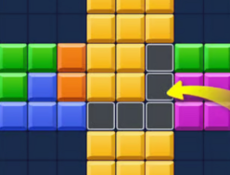

Puzzle games represent a category of interactive entertainment that focuses on problem-solving and logical thinking. Instead of fast reactions or heavy storytelling, they rely on mechanics that challenge the player’s ability to analyze patterns, connect elements, or manage resources in specific ways. This makes them both accessible to newcomers and rewarding for players who enjoy strategy and reflection.
Core Principles
The design of puzzle games is built around clarity of rules and consistency of outcomes. Players are given a framework with specific mechanics, and the challenge arises from applying those mechanics under different conditions. Whether it is arranging blocks, decoding symbols, or manipulating objects in space, the satisfaction comes from understanding how the system works and applying that knowledge to advance.
Types Of Puzzle Games
The variety within the puzzle category is broad, offering experiences for different tastes. Some focus on numbers, others on words, and many on shapes or physics. What unites them is the way they challenge the mind to adapt and find solutions.
Common types include:
- Logic-based puzzles requiring deduction
- Word and number challenges such as crosswords or sudoku
- Spatial puzzles built around movement or rotation
- Physics-based designs that rely on gravity or momentum
- Hybrid forms combining puzzles with adventure or strategy elements
Learning And Engagement
Puzzle games are valued for entertainment and for the way they train cognitive skills. By forcing players to analyze and test possibilities, they strengthen memory, focus, and planning. Because the rules are often simple, the difficulty comes from scale or variation, which keeps engagement high without overwhelming new players. Many games in this category also provide gradual learning curves, starting with basic levels and evolving into more complex arrangements.
Puzzle games remain one of the most versatile categories in interactive media. They can exist as standalone experiences on computers or phones, or they can be integrated into larger genres as side mechanics. Their appeal lies in universal accessibility: a player does not need advanced skills to start but can invest as much effort as desired to master them. The category demonstrates how play can merge with thinking, making problem-solving itself a form of entertainment.















